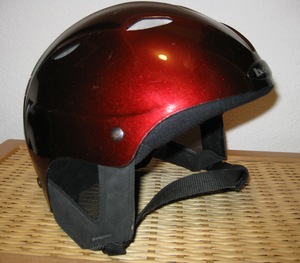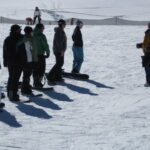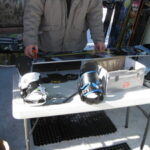Whether you are learning some sick new trick or just learning how to ride, a snowboard helmet is a wise investment. Slamming your head into a feature or onto a slab of hard snow just plain hurts and can cause severe head injury. It can also be just plain fun to crank some tunes and go riding. No matter your needs or fashion preferences, you want a helmet that delivers.
Choosing a helmet today can be overwhelming at times. There are a variety of styles, options, and features to pick from. So what can you expect to find when you go shopping for your next lid protector? You may be surprised.
Helmet safety standards
Impact head protection is the number one consideration when choosing a helmet. Contrary to popular belief, there are standards to which snowboard helmets are tested. Snowboard helmets can have a CEN 1077, ASTM F2040 or a Snell RS-98 standard certification. While these all test impact management, they do not all have the same stringency. The Common European Norm (CEN) 1077 rating has been around since 1996 but is the least stringent of the three ratings. The American Society of Testing and Materials (ASTM) F2040 standard was adopted in May 2000 and is the second most stringent snowsport helmet standard. The Snell RS-98 standard is the most stringent ski helmet standard in the world. Look for these ratings in your next snowsport helmet purchase. Don’t be tempted to use a bicycle helmet while on the slopes. Snowboard helmets are built to withstand multiple impacts, bicycle helmets are not.
Correct fit for your head
The various brands of helmets will fit differently on your head. Try on helmets and find one that conforms to the shape of your head. You can then use the supplied helmet fit pads to snug up the fit. Check the various helmet straps for adjustability and durability. Helmets come in men, women, and youth sizes.
Goggle fit
Not all helmets are goggle compatible. Don’t get stuck with a helmet that won’t let you use your goggles. Bring your goggles with you and check for fit and ventilation. You may still be able to buy a strap adapter from your goggle manufacturer.
Weather and Weight
Helmets can come with varying degrees of insulation and ventilation. Generally, the more insulation a helmet has, the heavier it is. Try on helmets that feel like the right amount of weight for your head. On bitter winter days you’ll love the warmth of a well-insulated helmet. In Spring, you may want a helmet that offers more ventilation to prevent heat buildup.
Options
Helmets today can come with many fashion options. Helmets now come in colors that cover the rainbow. They can have a brim over the eyes or can be integrated with a beanie. Most helmets now have removable ear pads that allow more warmth in winter or the addition of a helmet audio system.
Audio options
A recent addition to helmets are helmet stereo systems. These can be directly wired to your ipod or can be Bluetooth wireless systems. Depending upon the brand, systems can be standard to the helmet or can be added later. They usually replace helmet ear pads and come in small, medium, or large size.
Manufacturers
Stick with well-known quality helmet manufacturers. These include: Boeri, R.E.D., Smith, Giro, Pro-tec, Bern, Leedom, Team Wendy, K2 Snowboards, Salomon, Jofa, Bakoda, Uvex, Carrera, Bula, and Ovo,
www.adaptiveski.org/applications/HELMET_INFORMAT ION.pdf






